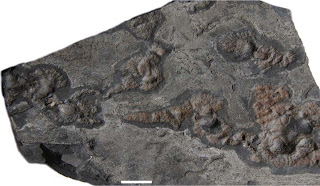| Yeast cells under a microscope (Saccharomyces cerevisiae) |
To answer this question, a team of scientists at Harvard University, led by Dr Andrew Murray, set up a model that used yeast cells (Saccharomyctes cerevisiae) in a solution of sucrose, more commonly known as table sugar. Sucrose in its molecular form is too big to pass through the yeast cell's membrane. The yeast therefore excrete an enzyme called invertase to break down the sucrose into two simpler sugars called glucose and fructose. These are small enough to pass across the cell membrane.
The yeast cells capture them using chemicals known as transporter molecules which are an integral part of the cell membrane. The problem arises once the sucrose has been broken down. The glucose and fructose are carried from where they encountered the invertase to the cell by diffusion. Diffusion is when a substance moves from an area of high concentration to an even concentration in a liquid. The yeast take advantage of this movement to bring the sugar molecules to their cells.
 |
| Francevillian Group Fossils are the oldest known remains of early multicellular organisms |
The team believe that early cells would have done a similar thing with one slight twist. Instead of existing as a large colony of individual cells, these early eukaryotes would have evolved bodies with multiple cells all of which would have excreted digestive enzymes, increasing the concentration of usable molecules in the area. It is likely that these multicelled creatures would have been very like sponges in shape and lifestyle. If such creatures were predators, they would have been able to digest their prey faster and absorb more energy.